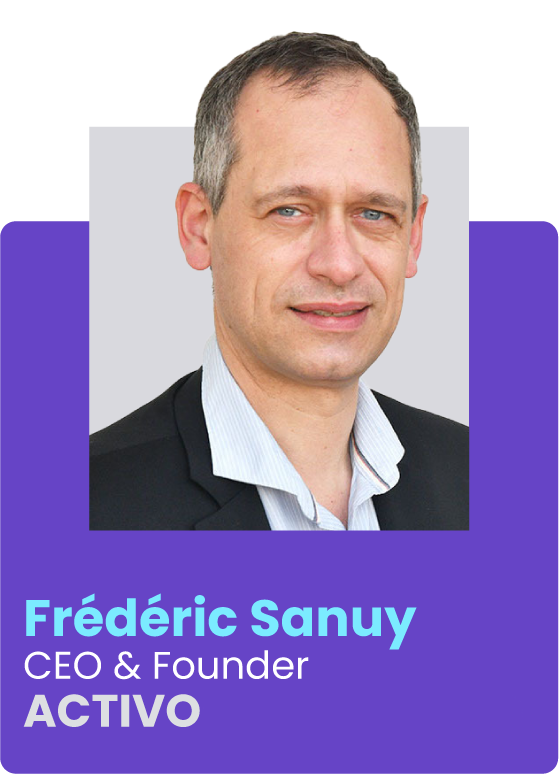
May 30, 2023
Digital Supply Chain - All Hype or Dead Without It? - Panel Discussion
On the 22nd of June, 2023 CI HUB hosted another insightful HSEvent Webinar titled “Digital Supply Chain - All Hype or Dead Without It?”
Hear from DAM and digital content experts and learn from their experience in this lively round-table discussion on the value of the digital supply chain.
Watch the full video below!
“Digital Supply Chain - All Hype or Dead Without It?”
Questions answered:
- What is the digital supply chain?
- How can it help improve insights into digital content?
- What can we learn?
- Is it all 'hot air' or is there real value?
Webinar Summary
Welcome to the Digital Content Supply Chain, where the creation of unique content and the customer journey is there to not only engage audiences but to win hearts and minds; where Adobe’s vision is to empower anyone within an enterprise to be the creator and where the content supply chain supported with customer data can finally make marketing meaningful and genuinely engaging.
The future of marketing is all about the personalization of digital content, and our panel of expert speakers, Elliot Sedegah, Frederic Sanuy, Josh Van Dyk and Peter Krogh, all agreed with Peter’s comment; “we’ve moved from one to one, to one too many, and now we’re moving to a many to many models of communication where content personalization – the process of creating unique content for each customers’ journey is now a new reality”.
But the ability to create and personalize content comes with the need for controls. There needs to be trust and an understanding, as Josh added that “although a DAM can manage digital assets to support a campaign, so too there’s a need for trusted and accurate data to enable personalization”.
What is the larger objective of ‘truth-based’ media marketing, and in thinking of the digital supply chain, what are the future challenges of communicating in mass? From the metadata standpoint, provenance and truth are essential to everyone.
So, can generative AI help with the creative process in the digital supply chain? Elliot explained that Adobe had seen massive interest in AI and how FireFly, Adobe’s AI technology, can help with creativity and ideation and inspire and help with production and co-creation to create truly remarkable experiences.
Andy Michalski then asked the question to our panellists – “If AI can create anything when you need it, is there any point in having a DAM?” This question brought our panellists together where the value of the existing content library would be better appreciated. Original digital content stored in a DAM will be every organization’s treasure trove. Clearly, every organization with a digital presence needs systems to manage this data effectively.
In the future, more demanding and perhaps snapshot world, there’s going to be the need to keep track of the created asset and as Frédéric Sanuy pointed out, for brands, it’s essential to discover the right way forward and that we “shouldn’t confuse creativity, productivity and technology when it’s all about data”.
The panel moved on to discuss the legal requirements after Adobe’s news earlier this month that Firefly, Adobe’s generative-AI-powered image maker, is designed to be “safe for commercial use” to the point that Adobe is now offering to indemnify customers against any legal issues arising from its use... How do we track truth? The good news is that we’ve moved on from Blockchain as Peter brought smiles to the other panelists by defining Blockchain as “an inefficient database that nobody can fix when there are errors”.
There will, of course, be court battles where the AI-generated model will stick six fingers up in court but won’t be able to satisfy our insatiable demand for customer experience. We’re moving to the new standard, which will be a more creative, expressive world.
The panel agreed that AI would never replace smart people - which, alongside the news published in the New Scientist this week that AIs become useless if they keep learning from other AI-generated output https://www.newscientist.com/article/2378706-ais-will-become-useless-if-they-keep-learning-from-other-ais/ [registration required] would be reassuring for anyone feeling as though the robots were coming.
Summing up, Frédéric Sanuy commented that regardless of the technology, it’s about people explaining that in Formula 1 MotorSport, it’s not just about the car but also the driver.
We would like to thank everybody who was attending and the DAM and digital content experts for sharing their experience in this lively round-table discussion on the value of the digital supply chain.
Questions & Answers
Question: Are there any systems, what users can trust that the AI is only fed by approved or compliant assets?
Answer:
There is currently no known system that guarantees the exclusive use of approved or compliant assets in AI training, making it difficult to establish complete trust in the output.However, many acknowledge that this AI can serve as a valuable assistant, as others have noted.
Question: Can blockchain technologies help in tracking or archiving data compliance?
Answer:
Blockchain technologies are one way to establish trust in content, there are various other methods, such as Adobe's content authenticity initiative, that can ensure the origin and safety of generated content. The focus is on maintaining purity and having a record of content creation, including legal indemnification, to manage risks and enable scalable growth, while considering copyright and rights management.
Question: Can artificial intelligence replace humans?
Answer:
Currently most companies are not replacing humans with AI, but they use this tool to be able to reach more people and to be more frequent in advertising. Companies usually struggle to meet their reach goals so they could increase their content production with various AI technologies. With this technology, they can target different audiences and deliver more personalized content to larger number of people.
Question: Do we need to create content for AI or search engines instead of people?
Answer:
At the end of the day, the success of a business lies in whether individuals are aware of the brand, engaging with it, and making purchases. Nowadays, businesses often focus on subscription models and constant engagement, requiring fresh and engaging content tailored to specific individuals or groups, while still reflecting the brand's identity. Artificial intelligence (AI) tools can assist in creating and managing a larger volume of content, ensuring it aligns with the brand and efficiently reaches and engages the intended audience on various devices. Ultimately, it is the individual customer who drives the business, and AI serves as a tool to optimize and enhance that engagement.
Speakers/Panelists

Elliot Sedegah is a Group Senior Product Marketing Manager for the Adobe Experience Manager. For more than 10 years, Elliot has worked with major brands and government organizations in software engineering, product management and IT consulting roles. His focus and interest is in helping organizations take full advantage of content in online, mobile and social channels to increase customer engagement with digital experiences. He holds an MBA from the MIT Sloan School of Management, a MS in Engineering Management from The George Washington University, and a BS in Computer Engineering from the University of Maryland.

Frédéric Sanuy has a PhD in nuclear physics, he is a marketing stack expert (DAM, PIM, CMS, CDP, CRM…) with a strong tech background. After 25 years working in IT as a manager in different agencies and working in pre-sales for different software vendors he is now the CEO and co-Founder of Activo, a French headquartered consultancy company dedicated to DAM PIM and CMS marketing stacks created in 2019 with Malika Kechich. Fred has over twenty-five years of experience working with different DAM systems from simple use cases to enterprise-wide implementations with solutions from across the World.

Josh Van Dyk is the Vice President of North American Sales at censhare, a Smart Content Management software combining DAM, PIM, CMS, & Publishing tools to manage every aspect of an organization's content lifecycle. Josh has worked in tech for 16 years, specifically in the MarTech space for the last eight years. As a thought leader in this space, Josh regularly speaks at major Digital Asset Management, MarTech, and Content Management events educating attendees on marketing technology solutions. In addition, Josh regularly publishes articles on market trends, marketing technology drivers, and the shortcomings of point solutions.

Peter Krogh is the Chief Product Officer for Mediagraph. He has been a leader in the DAM industry for 20 years. His first career was as a photographer, creating images for editorial and commercial clients. In the early 2000’s he helped shepherd the photo industry through the digital transformation from both business and technical perspectives. His book, The DAM Book, helped to standardize industry practice in workflow and asset management. The book launched an international speaking and consulting career, which includes 5 additional books, along with the Library of Congress’s Individual Innovation Award. Mediagraph is the culmination of this work, an adaptable, scalable media manager built on top of a knowledge graph.
